Gator® BLI 96-Flat, 96-, and 384-Tilt Plates are optimized for Biolayer Interferometry (BLI) technology. They are composed of black polypropylene and are available in flat and tilt-bottom formats. These BLI plates are compatible with Gator® and other systems that support the corresponding microplate format.
Product information
Gator® BLI microplate specifications
Source: Gator Bio, Inc.
| . |
. |
| Types of analysis |
Yes/no binding, quantitation, kinetics, affinity, off-rate ranking, epitope binning1,2,3 |
| Material |
Polypropylene1,2,3 |
| Color |
Black1,2,3 |
| Dimensions |
SBS standard1,2,3 |
| Temperature range |
5 oC - 60 oC1,2,3 |
| Min volume |
180 μL1, 130 μL2, 40 μL3 |
| Max volume |
220 μL1, 180 μL2, 100 μL3 |
| Sterilization |
No |
| Run time on Gator® platform |
< 4 hours at 40 μL*3 |
| Platform compatibility |
Gator® Pilot1, Gator® Prime1,2, Gator® Plus1,2,3, Gator® Pivot1,2,3, Gator® Pro1,2,3 and other BLI platforms compatible with either 96-well1,2 or 384-well microplate format with biosensor offset at 3 mm3 |
1 96-Flat, 2 96-Tilt, 3 384-Tilt
*3 Run time for 384-Tilt plate may vary depending on running temperature
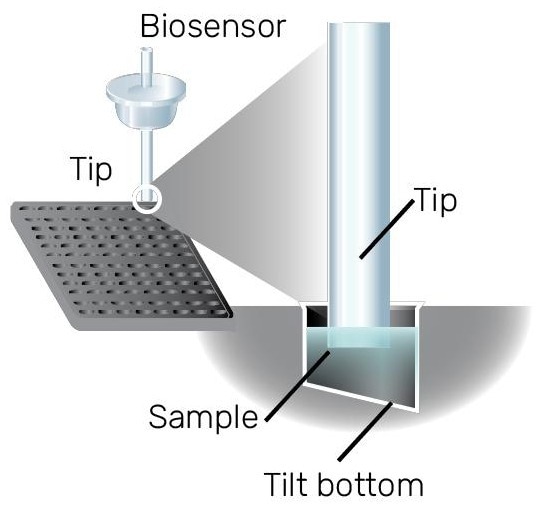
Gator® BLI Tilt-Bottom Plate Layout. Image Credit: Gator Bio, Inc.
Part number
- BLI 96-Flat Plate, Case of 100: 130260
- BLI 96-Flat Plate, Pack of 10: 130150
- BLI 96-Tilt Plate, Case of 100: 130282
- BLI 96-Tilt Plate, Pack of 10: 130162
- BLI 384-Tilt Plate, Case of 100: 130161-100pcs
- BLI 384-Tilt Plate, Pack of 10: 130161-10pcs
Storage conditions
Keep the box or case in its packaging at room temperature (RT).
Sample volume requirement
- 96-Flat Plate: 180 µL - 220 µL/well
- 96-Tilt Plate: 130 µL - 180 µL/well
- 384-Tilt Plate: 40 µL - 100 µL/well
Instructions
- Equilibrate samples and buffers to room temperature before starting the test
- New biosensors must be moistened for at least ten minutes before being used. Depending on the number of samples being analyzed, add 250 µL/well of Q Buffer or sample diluent (if samples are in another diluent, such as medium) to as many columns of the Max Plate (Gator Bio, PN. 130062) as necessary.
- With a tweezer, pick out a column of new probes and place them in 250 mL of Q Buffer or sample diluent (if samples are in another diluent, such as medium) from the previous step.
- Avoid bubbles while introducing buffers and samples to the Max plate and BLI microplates.
Correlation between Gator and Greiner plate
The BLI 96-Flat plate, made of polypropylene, is suitable for many applications with Gator® Biolayer Interferometry (BLI) systems. Due to its non-binding properties, it is ideal for evaluating biomolecule interactions.
The BLI 96-Flat plate and Greiner 96-well flat bottom microplate provide similar assay performance (titer dynamic range, precision, and accuracy) for BLI applications.
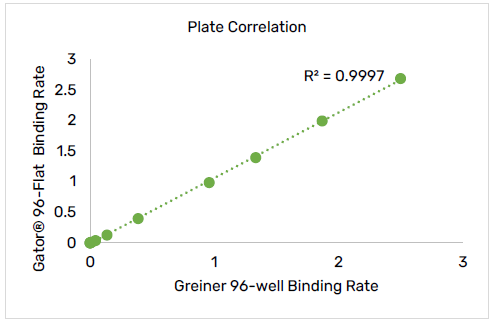
Figure 1. Correlation curve across the dynamic range of 0.4- 2000 µg/mL hIgG. Two types of plates correlate very well to one another. Image Credit: Gator Bio, Inc.
Table. 1. Measured binding rate and percent CVs show good correlation using the Gator® BLI 96-Flat plate and Greiner 96-well microplate. Source: Gator Bio, Inc.
| Conc. (μg/mL) |
Binding Rate |
% CV |
| BLI 96-Flat plate |
Greiner 96-well plate |
BLI 96-Flat plate |
Greiner 96-well plate |
| 2000 |
2.6889 |
2.5076 |
0.4% |
1.8% |
| 1000 |
2.0003 |
1.8781 |
0.7% |
1.1% |
| 500 |
1.3961 |
1.3375 |
0.7% |
0.7% |
| 300 |
0.9863 |
0.9600 |
0.7% |
0.3% |
| 100 |
0.4017 |
0.3856 |
1.7% |
0.4% |
| 30 |
0.1287 |
0.1380 |
1.2% |
0.7% |
| 10 |
0.0411 |
0.0431 |
2.4% |
2.6% |
| 3 |
0.0119 |
0.0129 |
5.1% |
4.3% |
| 1 |
0.0041 |
0.0042 |
5.4% |
6.6% |
| 0.4 |
0.0013 |
0.0013 |
6.0% |
5.3% |


Figure 2. A) Kinetics assay of Anti-PD-1 and PD-1 using Gator® AntiHuman IgG Fc Gen II (HFCII) in kinetics buffer (1000 rpm at 30oC) on the Gator® BLI 96-Flat plate. B) Kinetics assay of Anti-PD-1 and PD-1 using HFCII in Kinetics Buffer (1000 rpm at 30oC) on the Greiner 96-well microplate (Cat No. 655209). Both of the plates demonstrate identical kinetics sensor-grams. Image Credit: Gator Bio, Inc.
Compatibility with other BLI platform
The BLI 96-Flat plate is compatible with other BLI platforms that utilize the Greiner 96-well microplate format.
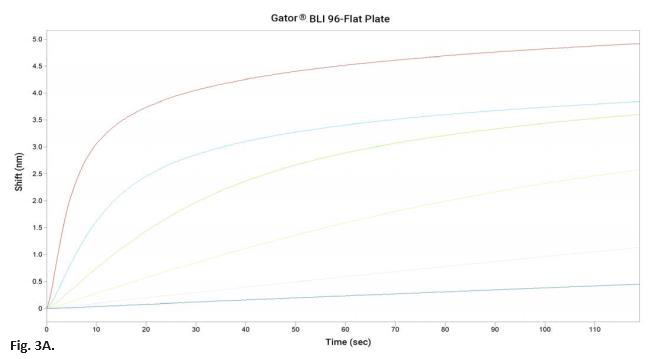
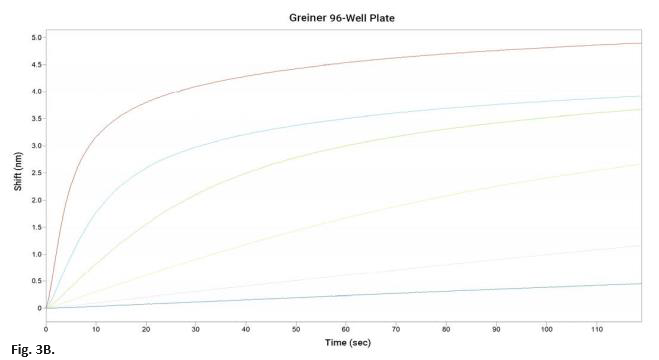
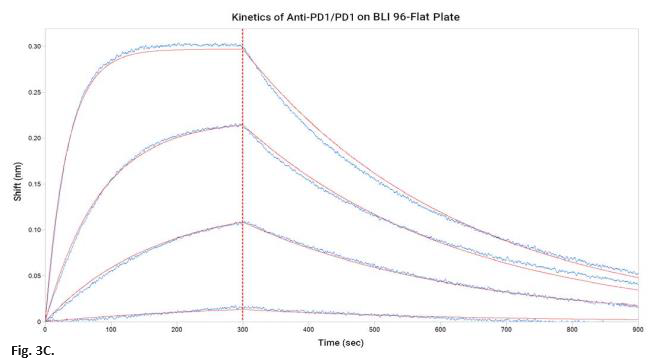
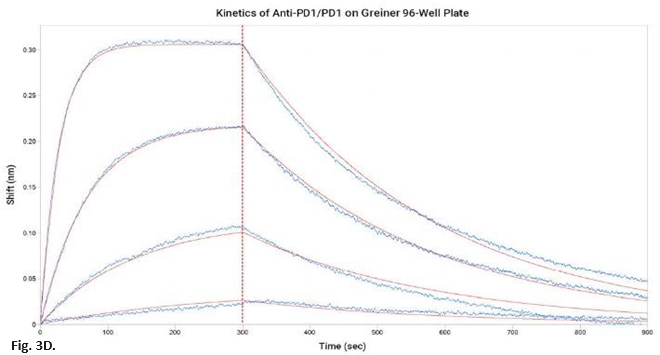
Figure 3. Quantitation and kinetics plate comparison on other BLI platform. 3A) sensor-gram across the dynamic range of 2.7-666 µg/mL hIgG on the BLI 96-Flat plate. 3B) sensor-gram across the dynamic range of 2.7-666 µg/mL hIgG on the Greiner 96-well microplate. 3C) kinetics sensor-gram of Anti-PD-1 and PD-1 using HFCII biosensors on the BLI 96-Flat plate. 3D) kinetics sensor-gram of Anti-PD-1 and PD-1 using HFCII biosensors on the Greiner 96-well microplate. Image Credit: Gator Bio, Inc.
Table. 2. Kinetics data of Anti-PD-1 and PD-1 using HFCII biosensors on other BLI platform; results from Gator® BLI 96-Flat plate compares very well to those from Greiner 96-well microplates. Source: Gator Bio, Inc.
| Anti-PD-1 / PD-1 |
Gator® 96-Flat |
Greiner 96-well |
| kon (1/Ms) |
2.68E+005 |
3.32E+005 |
| koff (1/s) |
3.04E-003 |
3.55E-003 |
| KD (M) |
1.14E-008 |
1.07E-008 |
Plates
Source: Gator Bio, Inc.
| |
|
|
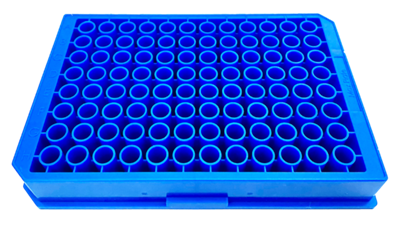 |
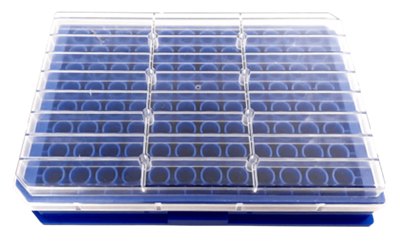 |
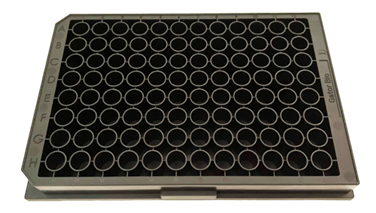 |
| Max Plates Without Lids |
Max Plate Lid, Lid Only |
BLI 96-Flat Black Plate (10pk) |
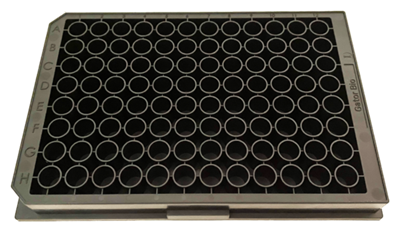 |
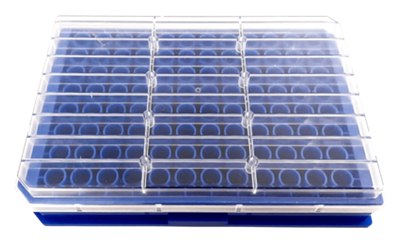 |
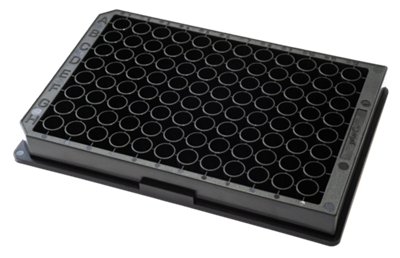 |
| BLI 96-Flat Black Plate, 1 Case (100pk) |
Max Plates With Lids |
BLI 96-Tilt Black Plate (10pk) |
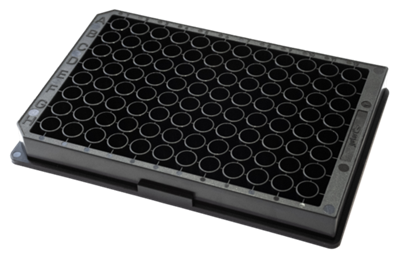 |
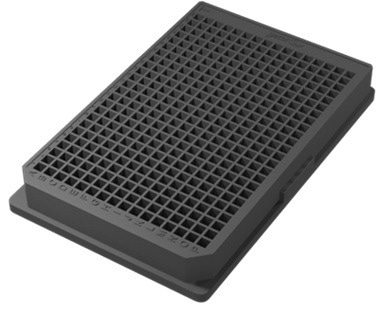 |
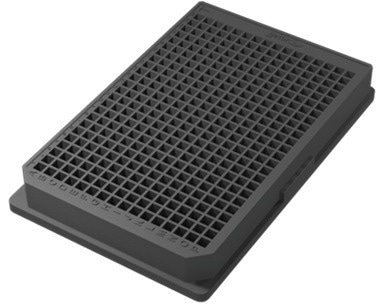 |
| BLI 96-Tilt Black Plate (100pk) |
BLI 384-Tilt Plate (10pk) |
BLI 384-Tilt Plate 1 Case (100 Plates) |